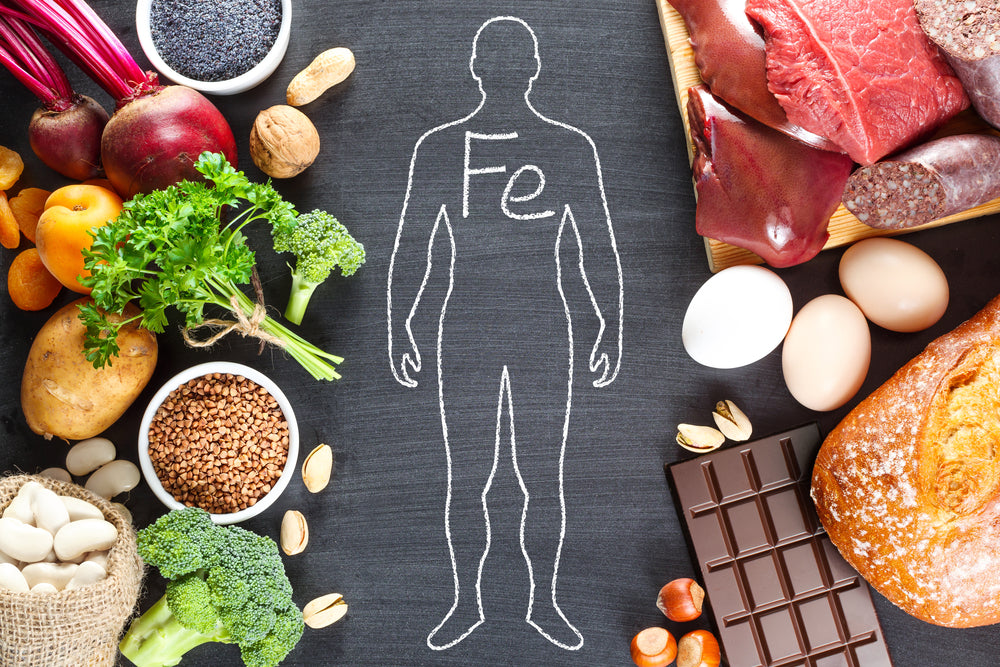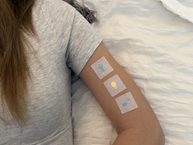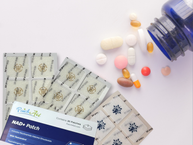Iron is in buildings, airplanes, magnets, and trains, and it’s also a critical element in your body. It’s an essential nutrient that’s commonly deficient, and it’s important to boost your levels if they’re low. PatchAid Iron Patches are high in iron,* and your healthcare provider may agree that this convenient source is right for you. Here’s what you should know about the importance of iron in your body and how to get enough.
What Iron Does in Your Body
Iron is present throughout your body, and it has multiple functions. Here are some of them.
Oxygen-Carrying Capacity
Iron is a critical part of hemoglobin. That’s the oxygen-carrying component of red blood cells. As red blood cells circulate throughout your body, they deliver oxygen to cells. Without enough iron, you will not get enough oxygen, and may feel short of breath or weak.
Immune Function
Iron is also part of a variety of enzymes, or proteins, that are in your immune system. For example, iron is necessary for certain types of white blood cells to engulf foreign and potentially harmful particles and get rid of them. In addition, iron is part of proteins that are part of some detoxification pathways. Without sufficient iron, you can be prone to more frequent infections.
Energy Production
Iron is needed to accept electrons as part of the process of energy production in your body. Without enough iron, you can feel tired and lethargic.
DNA Production
Iron is part of proteins that are needed for replicating DNA in healthy and correct ways. Without enough iron, there could be more mistakes, and that’s a cancer risk.
Reasons for Low Iron
Given that iron deficiency is the most common mineral deficiency worldwide, it’s not surprising that there are many possible reasons for low iron. One of them is not getting enough in your diet. Here are some sources of iron.
- Beef, pork, chicken, and turkey
- Egg yolks
- Fortified cereal and other fortified grains
- Lentils and beans
- Nuts
- Spinach, kale, and other leafy green vegetables
- Potatoes
You can support increased iron absorption by eating a source of vitamin C, such as bell peppers, spinach, tomatoes, or mangoes, with your iron.
These are some other risk factors for low iron.
- Being pregnant
- Being a female of child-bearing age
- Following a plant-based diet
- Having a gastrointestinal disorder, such as celiac disease or IBS
- Being a bariatric surgery patient
It’s best to talk to your doctor if you have symptoms of low iron or you have risk factors.
How to Detect and Address Low Iron Levels
Your healthcare provider can order tests for iron. They may include simple tests checking numbers and size of red blood cells. In addition, your ferritin levels can be checked to assess your body’s stores of iron.
If you need a supplement, oral supplements are notorious for causing constipation or other side effects. PatchAid Iron Patches are topical supplements that don’t cause an upset stomach. The nutrients are absorbed transdermally.
The Iron Plus Vitamin Patch also has vitamin A, vitamin C, and other antioxidants. The Simply Iron Patch only has iron and vitamin C. Ask your healthcare provider which of these easy and convenient patches may be right for you.
Remember that it can take a few weeks to feel better when you address iron deficiency, but it’s worth it. PatchAid Iron Patches can help by giving you a simple option that doesn’t involve supplements.
*The Food and Drug Administration has not evaluated these statements. PatchAid patches are not intended to diagnose, treat, cure or prevent any disease. Anyone with a medical condition should seek the advice of a licensed medical practitioner. Individual results may vary.







